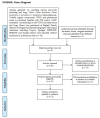Volatile Organic Compounds: A Promising Tool for Bed Bug Detection
- PMID: 36982123
- PMCID: PMC10048870
- DOI: 10.3390/ijerph20065214
Volatile Organic Compounds: A Promising Tool for Bed Bug Detection
Abstract
The recent decades' resurgence of bed bugs as a public health concern in industrialized countries has driven an increased interest on new sustainable insecticide-free methods to monitor and control these ectoparasites. Current methods of detection rely mainly on visual inspection or canine scent detection, which are methods that are time-consuming, require experience, are non-specific or require costly mission repetitions. Volatile organic compounds (VOCs) are considered an environmentally friendly alternative and a promising approach for bed bug detection. An overview of the released literature on VOCs, their chemical characteristics and their role in bed bugs' intra- and inter-species communications allowed us to highlight the identification of 49 VOCs in Cimex lectularius (23 molecules) and C. hemipterus (26), which are emitted by both sexes during diverse compartments including aggregation (46), mating (11), defense (4), etc., and all life stages including exuviae or dead bed bugs as a principal indicator of infestation. The latter has a great importance for application of these semiochemicals in successful detection and control management of bed bugs and to prevent their further dispersion. This approach has the advantage of more reliability compared to conventional detection methods with no need for repeated inspections, household furniture moving or resident rehousing for bed bugs' VOC detection, which are commonly performed by active or passive sampling with absorbing tubes and analyzed by gas chromatography-based analytical platforms.
Keywords: VOC detection; bed bugs; chemical ecology; olfactory sensilla; pheromones; semiochemicals.
Conflict of interest statement
The authors declare no conflict of interest.
Figures
References
-
- Akhoundi M., Chebbah D., Sereno D., Marteau A., Jan J., Bruel C., Elissa N., Izri A. Widespread mutations in voltage-gated sodium channel gene of Cimex lectularius (Hemiptera: Cimicidae) populations in Paris. Int. J. Environ. Res. Public Health. 2021;18:407. doi: 10.3390/ijerph18020407. - DOI - PMC - PubMed
Publication types
MeSH terms
Substances
LinkOut - more resources
Full Text Sources
Medical




